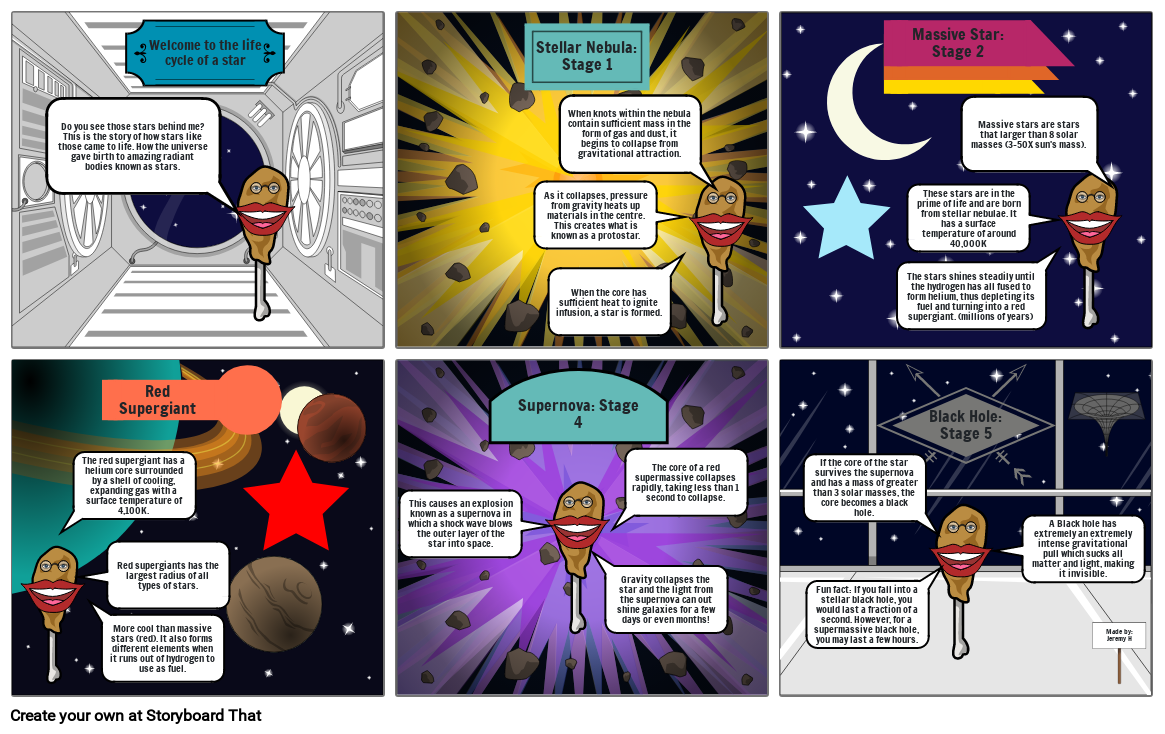Life Cycle of a Star

Storyboard Text
- Do you see those stars behind me? This is the story of how stars like those came to life. How the universe gave birth to amazing radiant bodies known as stars.
- Welcome to the life cycle of a star
- Stellar Nebula: Stage 1
- When the core has sufficient heat to ignite infusion, a star is formed.
- When knots within the nebula contain sufficient mass in the form of gas and dust, it begins to collapse from gravitational attraction.
- As it collapses, pressure from gravity heats up materials in the centre. This creates what is known as a protostar.
- Massive Star: Stage 2
- The stars shines steadily until the hydrogen has all fused to form helium, thus depleting its fuel and turning into a red supergiant. (millions of years)
- Massive stars are stars that larger than 8 solar masses (3-50X sun's mass).
- These stars are in the prime of life and are born from stellar nebulae. It has a surface temperature of around 40,000K
- The red supergiant has a helium core surrounded by a shell of cooling, expanding gas with a surface temperature of 4,100K.
- Red supergiants has the largest radius of all types of stars.
- More cool than massive stars (red). It also forms different elements when it runs out of hydrogen to use as fuel.
- Red Supergiant
- Supernova: Stage 4
- This causes an explosion known as a supernova in which a shock wave blows the outer layer of the star into space.
- Gravity collapses the star and the light from the supernova can out shine galaxies for a few days or even months!
- The core of a red supermassive collapses rapidly, taking less than 1 second to collapse.
- If the core of the star survives the supernova and has a mass of greater than 3 solar masses, the core becomes a black hole.
- Fun fact: If you fall into a stellar black hole, you would last a fraction of a second. However, for a supermassive black hole, you may last a few hours.
- Black Hole: Stage 5
- A Black hole has extremely an extremely intense gravitational pull which sucks all matter and light, making it invisible.
- Made by:Jeremy H
Over 30 Million Storyboards Created


